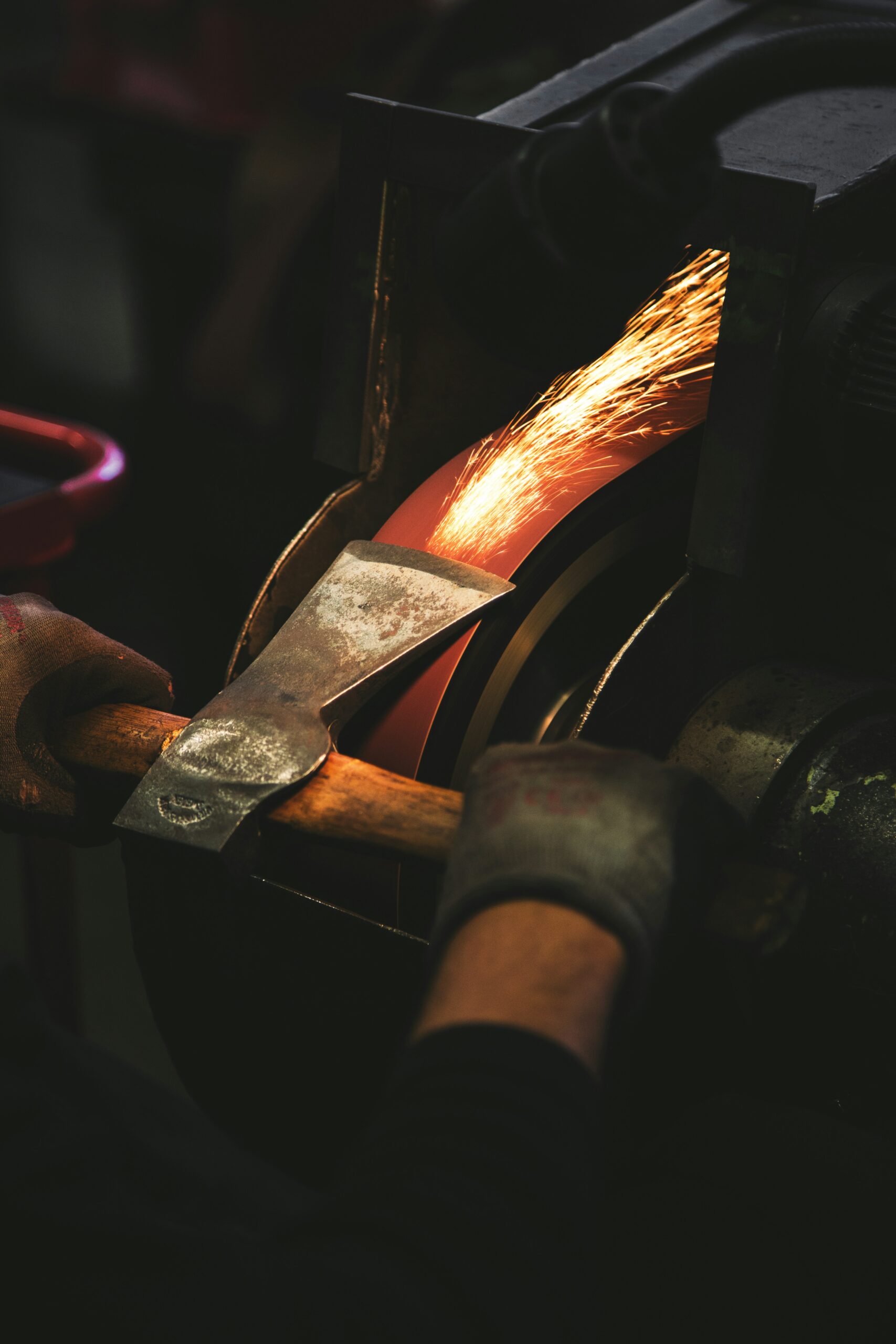Axe throwing may seem modern, but it dates back to the Stone Age, when stone axes were vital for hunting and combat. This guide explores its rich heritage, from traditional axes and their craftsmanship to modern techniques. Discover the cultural significance, tips for choosing and caring for throwing axes, and ways to enhance your skills, whether you’re a beginner or an experienced thrower.
Key Takeaways
- Axes have been vital tools for survival in hunting, gathering, and woodworking throughout history
- The symbolism of axes reflects strength, craftsmanship, and tactical skills across various cultures
- Traditional axe designs vary among cultures, showcasing unique features and practical uses
- Axe throwing connects modern enthusiasts with historical practices and cultural heritage
- Safety and maintenance are crucial when handling and caring for traditional throwing axes
Uncovering the Ancient Origins of Axe Throwing

Axes have played a vital role throughout human history, serving as indispensable tools for hunting, gathering, and survival. Beyond their practical use, axes held deep symbolic meaning in ancient cultures, often representing strength, resilience, and skilled craftsmanship.
Among Germanic tribes, axe throwing emerged as a prominent aspect of warfare, with iron and steel axes becoming formidable weapons on the battlefield. These historical elements highlight the enduring significance and rich legacy of axe throwing across time.
Early Uses of Axes in Human History
Axes have played a crucial role in human history, particularly in relation to hunting, gathering, and woodworking. Early humans crafted axes from wood and stone, evolving to use carbon steel for improved durability and effectiveness. The tomahawk, a notable design, highlights the significance of axes not just as tools but as essential weapons in various cultures, reflecting their importance in survival and craftsmanship.
Symbolism of Axes in Ancient Cultures
In ancient cultures, axes held more than just functional value; they also carried deep symbolic meanings. For example, the Francisca was a throwing axe used by the Franks, representing their warrior spirit and tactical skills in battle. This connection between axe throwing and combat highlights the significance of axes as weapons, embodying strength and craftsmanship throughout history.
Axe Throwing in Historical Warfare
Axe throwing was pivotal in historical warfare, particularly during the Middle Ages. Armies like the Franks effectively utilized hand axes in battle due to their length and precision, often aiming for a bullseye to defeat their opponents. This critical use of axes showcased military skills and emphasized the importance of targeted weaponry in achieving success on the battlefield.
Traditional Axes From Around the World

Traditional axes vary greatly across cultures, showcasing unique designs and practical uses. The Viking axe symbolizes a warrior’s legacy, while the tomahawk plays a crucial role in Native American culture. The Francisca represents the Frankish tactical skill. African throwing axes feature distinctive shapes, and Asian axes influence modern throwing techniques. Each type highlights the heritage and importance of axe throwing.
The Viking Axe and Its Legacy
The Viking axe, known for its distinctive shape and sharp blade, stands as a symbol of the Norse warriors’ legacy. These axes were tools for daily tasks and essential weapons in battles, showcasing the craftsmanship and skills of Viking blacksmiths. The design of the Viking axe has influenced modern axe throwing, as many enthusiasts learn techniques based on its historical use, highlighting the axe’s enduring impact on both culture and sport.
The Tomahawk in Native American Culture
The tomahawk is a traditional axe deeply rooted in Native American culture. It serves both practical and ceremonial purposes. Crafted carefully, it often features a wooden handle and a sharp metal blade, symbolizing the connection between nature and craftsmanship. Many Native American tribes utilized the tomahawk as a versatile tool for hunting, combat, and trade, highlighting its significant role in daily life and cultural identity.
The Francisca Axe of the Franks
The Francisca axe, used by the Franks during the early Middle Ages, is a remarkable example of a traditional throwing axe. With its characteristic curved blade, the Francisca was designed not just for close combat but also for throwing at enemies from a distance, showcasing the tactical skills of Frankish warriors. The significance of the Francisca extends beyond its practical use in battle; it also represents the craftsmanship and strategic thinking that defined the culture of the Franks, making it an essential part of their heritage and the history of axe throwing.
African Throwing Axes and Their Unique Designs
African throwing axes showcase diverse designs that reflect the continent’s rich cultural heritage. These axes are often crafted from various materials, including wood and metal, with distinctive shapes that serve both practical and ceremonial purposes. The unique artistry of these axes highlights the craftsmanship involved and their importance in cultural rituals and traditional practices: their variety and significance are remarkable.
- African throwing axes use different materials like wood and metal.
- The designs vary greatly and are influenced by cultural practices.
- They serve practical uses in daily life and play a role in rituals.
Asian Axes and Their Influence on Throwing Techniques
Asian axes have left a significant mark on the art of axe throwing, influencing techniques practiced worldwide today. Various styles from countries like Japan and China emphasize precision and control, with unique designs that enhance throwing accuracy. For instance, the Japanese tachi and Chinese dao feature distinct shapes and weights, which help users develop their skills and improve their throws effectively:
Craftsmanship Behind Traditional Axes

The craftsmanship behind traditional axes reveals much about their history and significance. This section will explore the materials used in ancient axe making, highlighting the importance of wood and metal. It will also discuss traditional axe forging methods, showcasing artisans’ skills. Lastly, the distinctive features of traditional axe heads and handles will illustrate the unique designs that define these tools.
Materials Used in Ancient Axe Making
In ancient axe making, materials played a vital role in determining the effectiveness and durability of the tools. Early craftsmen primarily used wood for handles, as it provided the necessary strength while being lightweight.
For the axe heads, materials evolved from simple stone to metals like bronze and iron, significantly improving performance in both daily tasks and combat situations. Understanding these materials helps to appreciate the skill involved in traditional axe crafting and the cultural significance of these weapons throughout history.
Traditional Methods of Axe Forging
Traditional methods of axe forging reveal a deep cultural heritage and skilled craftsmanship. Blacksmiths used techniques passed down through generations, often shaping axe heads by heating metal in a forge and hammering it into form on an anvil. This meticulous process, focusing on balance and weight, ensures that each axe is functional and tailored for precision in throwing, reflecting the importance of craftsmanship in the art of axe throwing.
Distinctive Features of Traditional Axe Heads and Handles
Traditional axe heads and handles showcase unique features that reflect both functionality and craftsmanship. Axe heads are often shaped to provide balanced weight and effective cutting angles, which aid in both chopping and throwing. Handles, typically made from strong yet lightweight materials like hickory or ash, are designed for comfort and grip, ensuring better control during use:
- Axe heads feature balanced weight for improved performance.
- Handles are made from durable woods like hickory or ash.
- The design ensures comfort and a better grip for enhanced control.
Techniques of Traditional Axe Throwing

Techniques of traditional axe throwing include essential grips and stances, which have been passed down through generations. This section will explore both one-handed and two-handed throwing methods, showcasing their unique characteristics. Practicing precision and control with traditional axes is also vital, as it enhances throwing accuracy and skill, making these techniques an important part of the heritage of axe throwing.
Grips and Stances Passed Down Through Generations
Grips and stances used in traditional axe throwing have been refined over generations, emphasizing both safety and accuracy. A firm grip on the handle allows for better control, while the stance affects stability and balance during the throw. Practicing these techniques improves skill and connects throwers to the rich heritage of axe throwing, making the experience both historical and practical.
One-Handed Versus Two-Handed Throwing Methods
Regarding axe throwing, throwers often choose between one-handed and two-handed methods. One-handed throws provide more flexibility and speed, allowing throwers to aim quickly, which is useful for competition.
In contrast, two-handed throws offer greater stability and control, enabling throwers to deliver more power behind each throw. Understanding the differences between these techniques helps enthusiasts find the best method that suits their personal style and improves their overall accuracy.
Practicing Precision and Control With Traditional Axes
Practicing precision and control with traditional axes is essential for both beginners and experienced throwers. Focusing on consistent grip and stance directly impacts throwing accuracy. Regular drills that target distance and aim help throwers develop the necessary skills for effective axe throwing, ultimately connecting them to the rich heritage of this sport.
Conclusion
The heritage of axe throwing reveals a rich history intertwined with survival, craftsmanship, and cultural significance across various societies. Understanding traditional axes enhances appreciation for these tools and highlights their role in rituals, warfare, and as symbols of strength.
Practicing safe handling and maintenance is essential for preserving this unique art form. Embracing these traditions allows enthusiasts to connect with a legacy that continues to resonate in modern axe-throwing competitions.

